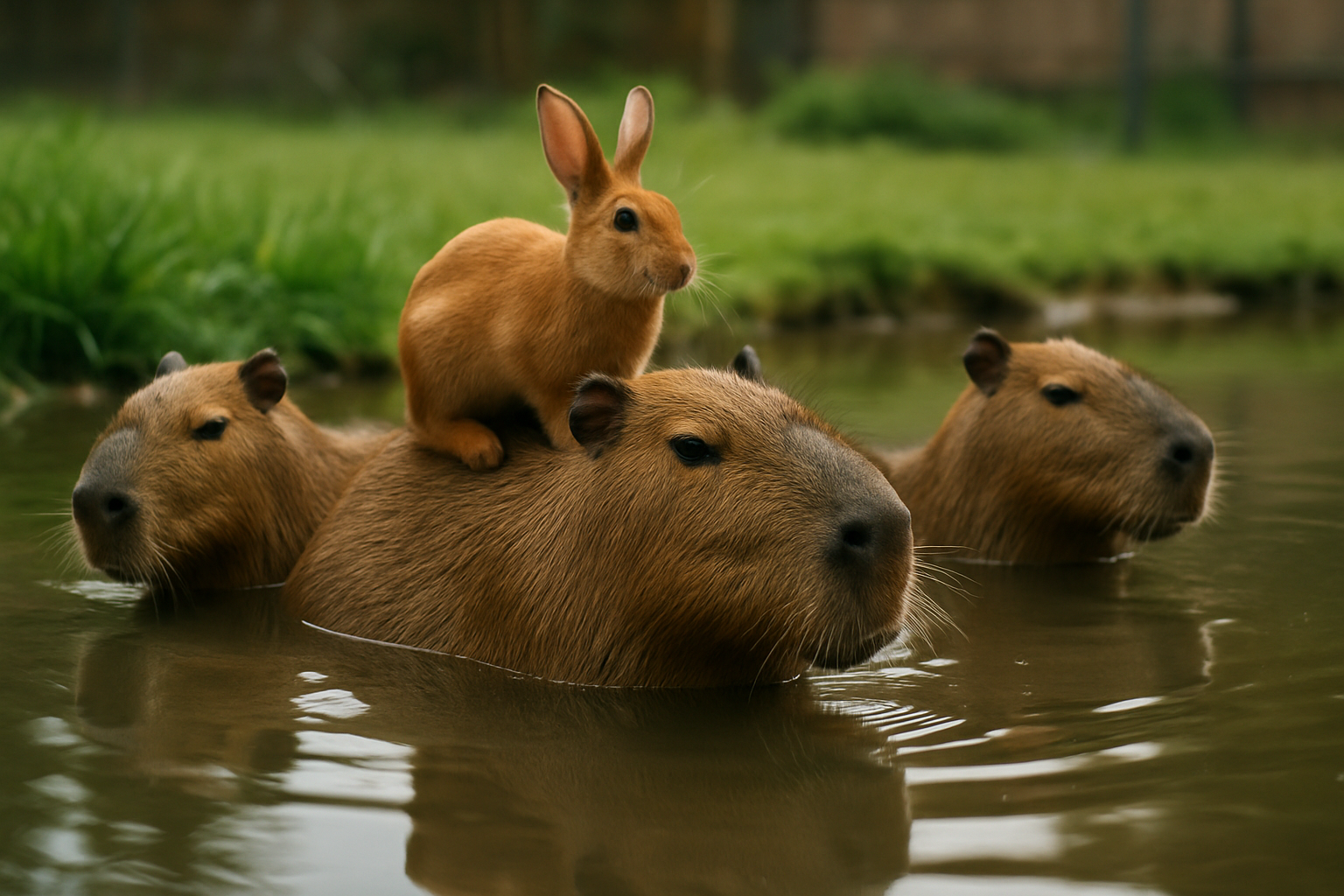Capybara Companions: The Rise of Exotic Rodents as Household Pets
In the ever-evolving world of pet ownership, a surprising trend has emerged: the capybara as a household companion. These giant rodents, native to South America, are capturing the hearts of adventurous pet enthusiasts worldwide. This article delves into the fascinating world of capybara pet ownership, exploring the challenges, joys, and responsibilities that come with welcoming these unique creatures into our homes.

The Capybara: Nature’s Gentle Giant
Capybaras, scientifically known as Hydrochoerus hydrochaeris, are the largest rodents in the world. Native to South America, these semi-aquatic mammals can weigh up to 150 pounds and measure about 4 feet in length. In their natural habitat, capybaras are highly social creatures, living in herds of 10 to 20 individuals near bodies of water. Their friendly demeanor and unique appearance have contributed to their growing appeal as pets.
These animals possess several characteristics that make them intriguing as potential companions. Capybaras are known for their intelligence and can be trained to respond to basic commands. They are also highly social and can form strong bonds with their human caretakers. Their herbivorous diet, consisting mainly of grass and aquatic plants, makes them relatively easy to feed compared to some other exotic pets.
Legal Considerations and Ethical Concerns
Before considering a capybara as a pet, it’s crucial to understand the legal landscape surrounding exotic pet ownership. Laws regarding capybara ownership vary widely by country, state, and even municipality. In many areas, keeping a capybara as a pet is illegal without proper permits or licenses. Prospective owners must thoroughly research local regulations and obtain necessary permissions before bringing a capybara home.
Beyond legal considerations, there are significant ethical concerns surrounding the domestication of wild animals. Capybaras are not traditionally domesticated and may face challenges adapting to life as household pets. Critics argue that keeping these animals in captivity, away from their natural habitats and social structures, can be detrimental to their well-being. Responsible ownership requires a deep understanding of capybara behavior, needs, and the potential impact of captivity on their physical and mental health.
Creating a Capybara-Friendly Environment
Providing an appropriate living space for a capybara is no small feat. These large rodents require ample room to roam, swim, and engage in natural behaviors. A suitable enclosure should include a large outdoor area with access to a pool or pond, as capybaras are semi-aquatic and need water for temperature regulation and recreation. The enclosure must be secure to prevent escapes and protect the capybara from predators.
Indoor spaces should be capybara-proofed, with potential hazards removed and sturdy furniture that can withstand their size and strength. Temperature control is crucial, as capybaras are sensitive to extreme heat and cold. Owners must be prepared to invest significantly in creating and maintaining a suitable habitat, which can be costly and space-consuming.
Diet and Health Considerations
Maintaining a proper diet is essential for capybara health. In the wild, these animals primarily consume grass and aquatic plants. As pets, their diet should consist of high-quality grass hay, fresh vegetables, and specially formulated pellets. Owners must be cautious about overfeeding, as capybaras can become obese in captivity.
Regular veterinary care is crucial, but finding a veterinarian experienced in treating capybaras can be challenging. These animals are prone to certain health issues, including dental problems, parasites, and skin conditions. Preventative care, including regular check-ups and appropriate vaccinations, is vital for maintaining their well-being.
Social Needs and Behavioral Considerations
Capybaras are highly social animals that thrive in the company of their own kind. In captivity, they often form strong bonds with their human caregivers but may still require companionship from other animals. Some owners opt to keep capybaras in pairs or small groups to meet their social needs.
Training and socialization are important aspects of capybara ownership. While generally docile, these animals can become territorial or aggressive if not properly socialized. Consistent training from an early age can help capybaras develop good manners and strengthen their bond with their human family.
The Financial Impact of Capybara Ownership
The cost of owning a capybara extends far beyond the initial purchase price, which can range from $1,000 to $3,000 for a young, captive-bred animal. Prospective owners must consider ongoing expenses such as specialized housing, diet, veterinary care, and potential property modifications. The annual cost of maintaining a capybara can easily exceed several thousand dollars, making it a significant financial commitment.
Additionally, capybara ownership may impact property values and insurance rates. Some homeowners’ insurance policies may not cover exotic pets, requiring owners to seek specialized coverage. The presence of a large, semi-aquatic rodent on the property could also affect resale value, depending on local attitudes towards exotic pet ownership.
A Unique but Challenging Pet Choice
Capybara ownership represents a unique and complex facet of the exotic pet trade. While these animals can form strong bonds with humans and offer a truly distinctive pet experience, the challenges of providing appropriate care, navigating legal restrictions, and addressing ethical concerns are significant. Prospective owners must carefully consider their ability to meet the extensive needs of these animals before embarking on capybara companionship.
As the trend of exotic pet ownership continues to evolve, it’s crucial for animal enthusiasts, lawmakers, and conservation experts to engage in ongoing dialogue about the implications of keeping wild animals as pets. The capybara’s journey from South American wetlands to suburban backyards serves as a fascinating case study in the complex relationship between humans and wildlife in the modern world.





